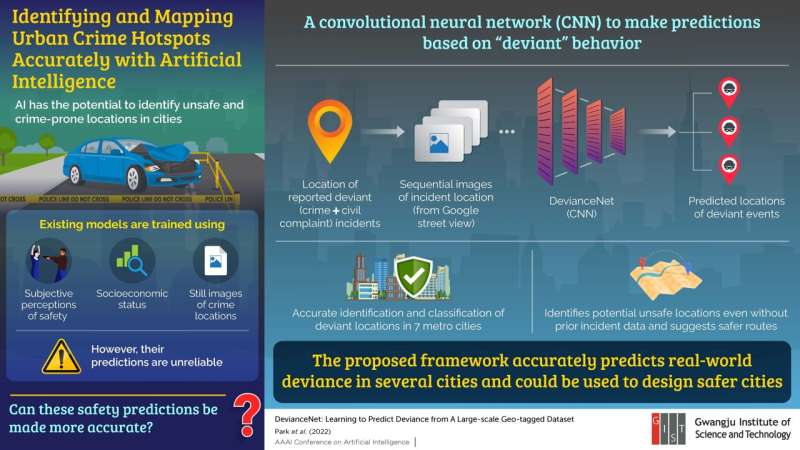Identifying potential crime hotspots in cities is an important issue for urban security development and helps authorities take the necessary steps to make cities safer for their inhabitants.
The effectiveness of such precautions depends on the accuracy of the predictions made by artificial intelligence-based models. Most existing models use a safe place, socioeconomic status, and subjective perception of still images of crime scenes, with few violent crimes classified as input data. As a result, there is often a contradiction between their predictions and reality.
In a new study presented at the AAAI conference on artificial intelligence, researchers at the Gwangju Institute of Science and Technology (GIST) in South Korea are not only violent but also different, based on large datasets and the concept of “deviation”. It includes not only crimes but also civil proceedings against behaviors that violate social norms, also known as “deviant behaviors.”
As a result, they developed a complex neural network model, aptly named “DevianceNet”, and trained it using a geotagged dataset of deviant incident reports with corresponding sequential images of incident data obtained using Google Street View. Our study is the first to use deep learning techniques to investigate the relationship between urban appearance and anomalies, “commented Associate Professor Heggan John, who led the study.
Researchers collected images from 10 GPS coordinates within a radius of 50 meters from the location of the reported incident and created a total of 120 images for each GPS location, including images in 12 directions. They trained and tested the model with 2,250 different locations and 760,952 images, using data from five major cities in South Korea and two major cities in the United States. These large datasets have improved the predictive power of the model and made it possible to detect potential out-of-orbit locations. This has improved the visual perception of tasks such as recognition, classification, and localization, explains Dr. John. The overall representation of DevianceNet extracted from the entire image sequence allows us to accurately classify and detect deviant locations.
Models can identify deviant behavior based on the visual attributes of the environment, so they are not city-specific and can be used to identify potentially dangerous locations even when criminal data is not available. This will be a useful tool in countries with poor records. We can also integrate this model with navigation services to suggest safer routes, says Dr. John about the practical meaning of the study. In addition, city planners can use forecast results to understand how to redesign the city’s layout or design environment to reduce cases of deviant behavior and criminal activity.














